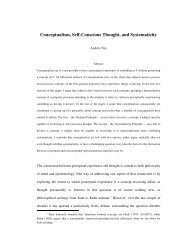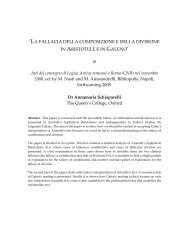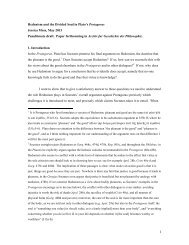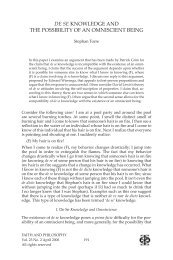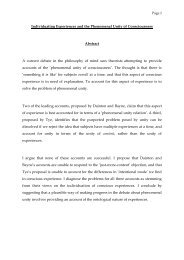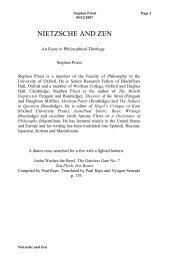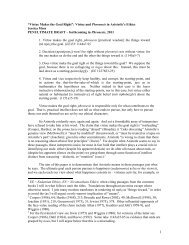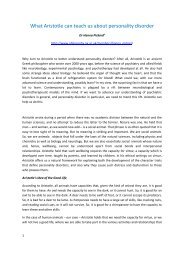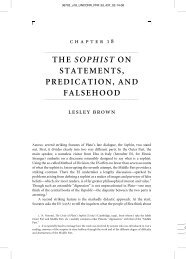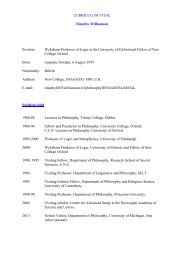In 'Assertion', Robert Stalnaker distinguishes between the sema
In 'Assertion', Robert Stalnaker distinguishes between the sema
In 'Assertion', Robert Stalnaker distinguishes between the sema
You also want an ePaper? Increase the reach of your titles
YUMPU automatically turns print PDFs into web optimized ePapers that Google loves.
absence be presupposed. Granted it may be initially tempting to think that if I presuppose<br />
something, I presuppose that I presuppose it. But it is also initially tempting to think that<br />
if I know something <strong>the</strong>n I know that I know it. As it turns out, both initially tempting<br />
thoughts cannot be true and for similar reasons.<br />
We presented Williamson’s line of thought in informal terms earlier. Let us look at a<br />
more careful (and faithful) version of <strong>the</strong> argument. Suppose someone knows that a tree<br />
is less than 100 centimetres tall by exercising visual discrimination from a distance.<br />
Given known limitations in human vision, <strong>the</strong> following margin for error principle seems<br />
to be something that <strong>the</strong> person knows about himself in that situation:<br />
(MEK) If <strong>the</strong> tree is N centimetres tall, <strong>the</strong> person is unable to know (from his current<br />
position, no matter how much reasoning he indulges in) that <strong>the</strong> tree is less than N+1<br />
centimetres tall.<br />
Suppose fur<strong>the</strong>r that <strong>the</strong> KK principle (roughly, if one knows p <strong>the</strong>n one is in a position to<br />
know that one knows p) were true and that knowledge can be always extended by<br />
deduction. Given KK, <strong>the</strong> person knows that he knows that <strong>the</strong> tree is less than 100<br />
centimetres tall (we can assume that <strong>the</strong> person has reflected on <strong>the</strong> question of whe<strong>the</strong>r<br />
he knows, and that all o<strong>the</strong>r such conditions that an application of <strong>the</strong> KK principle<br />
requires are satisfied in this case). He can <strong>the</strong>n use <strong>the</strong> premise that he knows that <strong>the</strong> tree<br />
is less than 100 centimetres tall along with <strong>the</strong> margin for error principle in a deduction<br />
from known premises to <strong>the</strong> conclusion that <strong>the</strong> tree is not 100 centimetres tall, i.e. that it<br />
is less than 99 centimetres tall. Given KK he knows that he knows than <strong>the</strong> tree is less<br />
than 99 centimetres tall. Now he can repeat <strong>the</strong> procedure. We are led to <strong>the</strong> absurd<br />
conclusion than he can know something false.<br />
Let us see how a very similar style of argument applies to presupposition. Suppose<br />
someone presupposes that a tree is less than 100 centimetres tall. Assume a PP principle:<br />
PP: If one presupposes q, one presupposes that one presupposes that q.<br />
1



